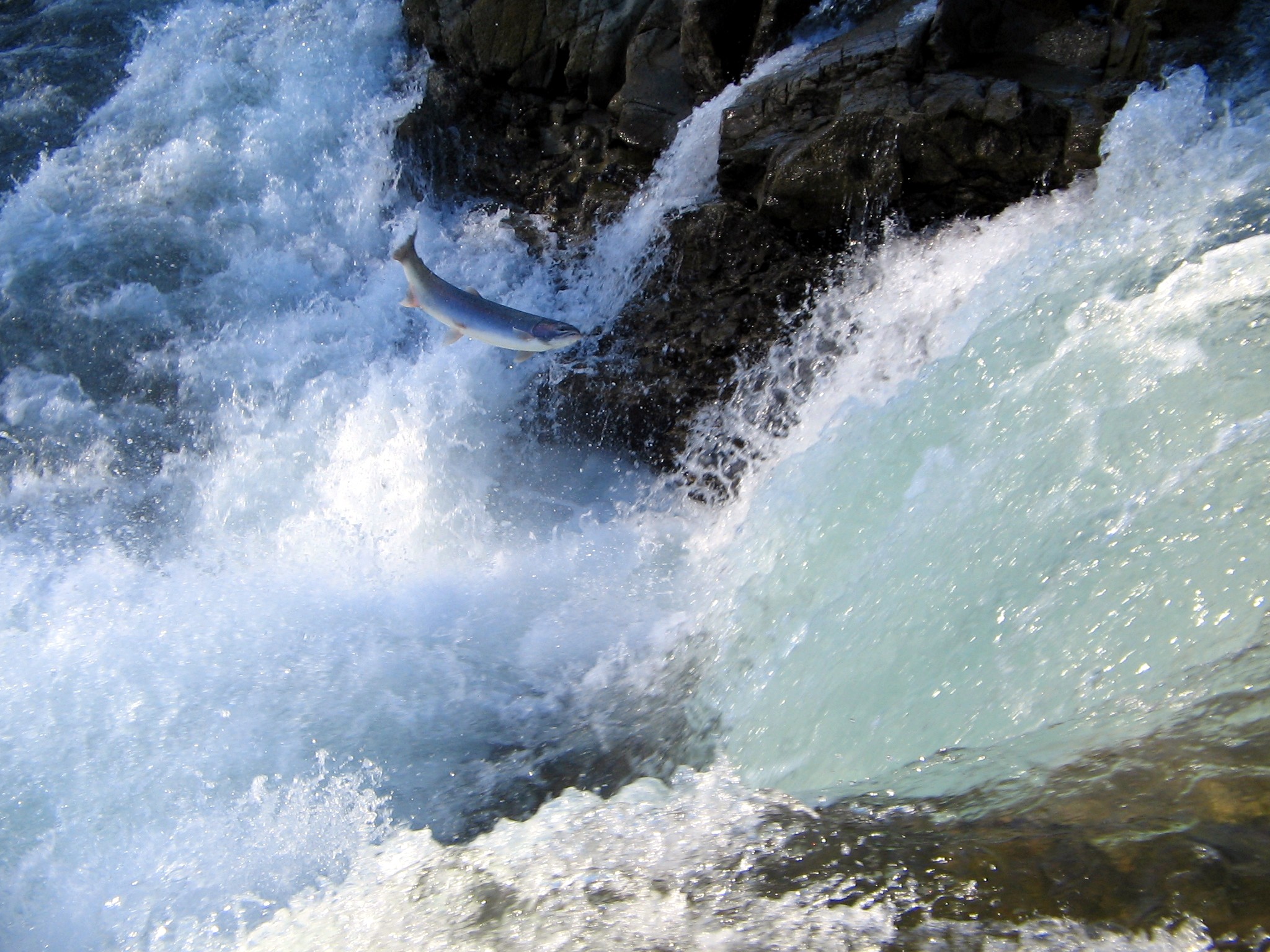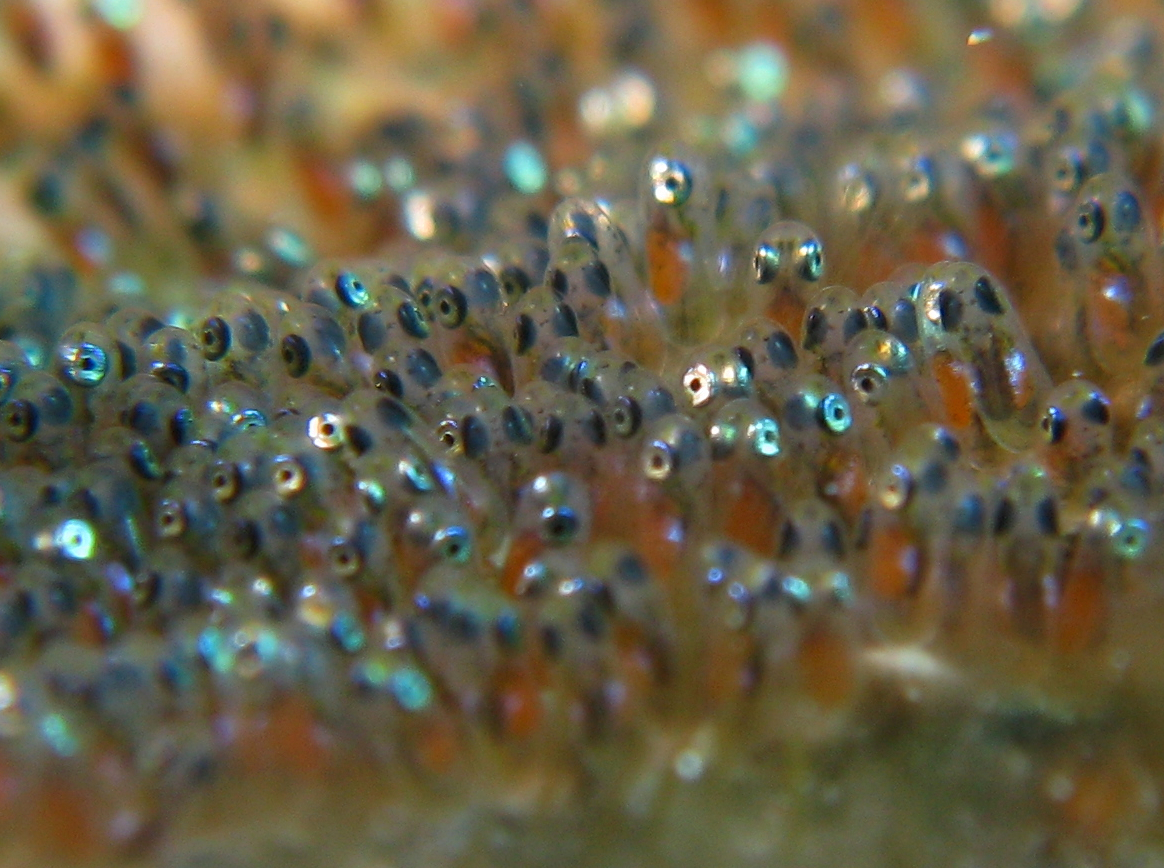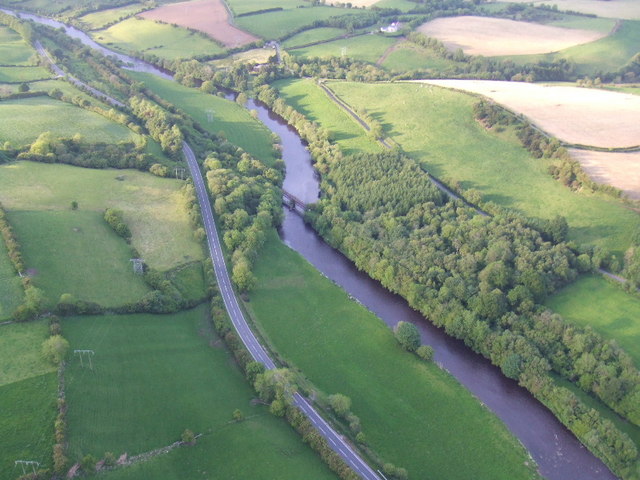|
Dollaghan
Dollaghan are a variety of brown trout (''Salmo trutta'') native to Lough Neagh, Northern Ireland, and many of its tributaries. They are a potamodromous migratory trout spending much of the year in the lough, returning to the rivers in autumn to spawn. Dollaghan are much sought after by anglers in County Antrim, County Tyrone and County Londonderry due to their greater size in comparison to the non-migratory trout found in streams such as the Ballinderry River, Six Mile Water, Moyola River and River Main. They are often caught in the dark using methods very similar to that of fishing for sea trout, where it is surmised their name comes from an old Irish word for 'ghost'.. Many anglers regard them as an elusive species and call them 'sea trout of Lough Neagh'. Their weight varies greatly - from small fish of around 1/2 lb to large specimens of around 20 lb. There are three other strains of brown trout in Ireland: Gillaroo The gillaroo (''Salmo stomachicus''; h ... [...More Info...] [...Related Items...] OR: [Wikipedia] [Google] [Baidu] |
Lough Neagh
Lough Neagh ( ; ) is a freshwater lake in Northern Ireland and is the largest lake on the island of Ireland and in the British Isles. It has a surface area of and is about long and wide. According to Northern Ireland Water, it supplies 40.7% of Northern Ireland's drinking water. Its main inflows are the Upper River Bann and Blackwater, and its main outflow is the Lower Bann. There are several small islands, including Ram's Island, Coney Island and Derrywarragh Island. The lake bed is owned by the 12th Earl of Shaftesbury and the lake is managed by Lough Neagh Partnership. Its name comes from Irish , meaning " Eachaidh's lake".Deirdre Flanagan and Laurance Flanagan, Irish Placenames, (Gill & Macmillan Ltd, 1994) Geography With an area of , it is the British Isles' largest lake by area and is ranked 34th in the list of largest lakes of Europe. Located west of Belfast, it is about long and wide. It is very shallow around the margins and the average depth in the ma ... [...More Info...] [...Related Items...] OR: [Wikipedia] [Google] [Baidu] |
Brown Trout
The brown trout (''Salmo trutta'') is a species of salmonid ray-finned fish and the most widely distributed species of the genus ''Salmo'', endemic to most of Europe, West Asia and parts of North Africa, and has been widely introduced globally as a game fish, even becoming one of the world's worst invasive species outside of its native range. Brown trout are highly adaptable and have evolved numerous ecotypes/subspecies. These include three main ecotypes: a riverine ecotype called river trout or ''Salmo trutta'' morpha ''fario''; a lacustrine ecotype or ''S. trutta'' morpha ''lacustris'', also called the lake trout (not to be confused with the lake trout in North America); and anadromous populations known as the sea trout or ''S. trutta'' morpha ''trutta'', which upon adulthood migrate downstream to the oceans for much of its life and only returns to fresh water to spawn in the gravel beds of headstreams. Sea trout in Ireland and Great Britain have many regional names: ... [...More Info...] [...Related Items...] OR: [Wikipedia] [Google] [Baidu] |
Northern Ireland
Northern Ireland ( ; ) is a Countries of the United Kingdom, part of the United Kingdom in the north-east of the island of Ireland. It has been #Descriptions, variously described as a country, province or region. Northern Ireland shares Republic of Ireland–United Kingdom border, an open border to the south and west with the Republic of Ireland. At the 2021 United Kingdom census, 2021 census, its population was 1,903,175, making up around 3% of the Demographics of the United Kingdom#Population, UK's population and 27% of the population on the island of Ireland#Demographics, Ireland. The Northern Ireland Assembly, established by the Northern Ireland Act 1998, holds responsibility for a range of Devolution, devolved policy matters, while other areas are reserved for the Government of the United Kingdom, UK Government. The government of Northern Ireland cooperates with the government of Ireland in several areas under the terms of the Good Friday Agreement. The Republic of Ireland ... [...More Info...] [...Related Items...] OR: [Wikipedia] [Google] [Baidu] |
Fish Migration
Fish migration is mass relocation by fish from one area or body of water to another. Many types of fish migrate on a regular basis, on time scales ranging from daily to annually or longer, and over distances ranging from a few metres to thousands of kilometres. Such migrations are usually done for better feeding or to reproduce, but in other cases the reasons are unclear. Fish migrations involve movements of schools of fish on a scale and duration larger than those arising during normal daily activities. Some particular types of migration are ''anadromous'', in which adult fish live in the sea and migrate into fresh water to spawn; and ''catadromous'', in which adult fish live in fresh water and migrate into salt water to spawn. Marine forage fish often make large migrations between their spawning, feeding and nursery grounds. Their movements are associated with ocean currents and with the availability of food in different areas at different times of the year. The migratory ... [...More Info...] [...Related Items...] OR: [Wikipedia] [Google] [Baidu] |
Spawn (biology)
Spawn is the eggs and sperm released or deposited into water by aquatic animals. As a verb, ''to spawn'' refers to the process of freely releasing eggs and sperm into a body of water (fresh or marine); the physical act is known as spawning. The vast majority of aquatic and amphibious animals reproduce through spawning. These include the following groups: * Bony fishes * Crustaceans (such as crabs, shrimps, etc.) *Mollusks (such as oysters, octopus, squid) *Echinoderms (such as sea urchins, sea stars, sea cucumbers, etc.) * Amphibians (such as frogs, toads, salamanders, newts) * Aquatic insects (such as dragonflies, mayflies, mosquitoes) *Coral, which are living colonies of tiny, aquatic organisms—not plants, as they are sometimes perceived to be. Corals, while appearing sedentary or botanical by nature, actually spawn by releasing clouds of sperm and egg cells into the water column, where the two mix. As a general rule, aquatic or semiaquatic reptiles, birds, ... [...More Info...] [...Related Items...] OR: [Wikipedia] [Google] [Baidu] |
County Antrim
County Antrim (named after the town of Antrim, County Antrim, Antrim, ) is one of the six counties of Northern Ireland, located within the historic Provinces of Ireland, province of Ulster. Adjoined to the north-east shore of Lough Neagh, the county covers an area of and has a population of 651,321, as of the 2021 United Kingdom census, 2021 census. County Antrim has a population density of 211 people per square kilometre or 546 people per square mile. It is also one of the thirty-two traditional Counties of Ireland, counties of Ireland. The Glens of Antrim offer isolated rugged landscapes, the Giant's Causeway is a unique landscape and a UNESCO World Heritage Site, Bushmills, County Antrim, Bushmills produces whiskey, and Portrush is a popular seaside resort and night-life area. The majority of Belfast, the capital city of Northern Ireland, is in County Antrim, with the remainder being in County Down. According to the United Kingdom Census 2001, 2001, United Kingdom Census 20 ... [...More Info...] [...Related Items...] OR: [Wikipedia] [Google] [Baidu] |
County Tyrone
County Tyrone (; ) is one of the six counties of Northern Ireland, one of the nine counties of Ulster and one of the thirty-two traditional counties of Ireland. Its county town is Omagh. Adjoined to the south-west shore of Lough Neagh, the county covers an area of , making it the largest of Northern Ireland's six counties by size, and the second largest county in Ulster after Donegal. With a population of 188,383 as of the 2021 census, Tyrone is the 5th most populous county in both Northern Ireland and Ulster, and the 11th most populous county on the island of Ireland. The county derives its name and general geographic location from Tír Eoghain, a Gaelic kingdom under the O'Neill dynasty which existed until the 17th century. Name The name ''Tyrone'' is derived from the Irish , meaning 'land of Eoghan', the name given to the conquests made by the from the provinces of and Ulaid. Historically, it was anglicised as ''Tirowen'' or ''Tyrowen'', which are closer to the Irish ... [...More Info...] [...Related Items...] OR: [Wikipedia] [Google] [Baidu] |
County Londonderry
County Londonderry (Ulster Scots dialects, Ulster-Scots: ''Coontie Lunnonderrie''), also known as County Derry (), is one of the six Counties of Northern Ireland, counties of Northern Ireland, one of the thirty-two Counties of Ireland, counties of Ireland and one of the nine counties of Ulster. Before the partition of Ireland, it was one of the Counties of Ireland, counties of the Kingdom of Ireland from 1613 onward and then of the United Kingdom after the Acts of Union 1800. Adjoining the north-west shore of Lough Neagh, the county covers an area of and today has a population of about 252,231. Since 1972, the counties in Northern Ireland, including Londonderry, have no longer been used by the state as part of the local administration. Following further reforms in 2015, the area is now governed under three different districts: Derry and Strabane, Causeway Coast and Glens and Mid-Ulster District, Mid-Ulster. Despite no longer being used for local government and administrative ... [...More Info...] [...Related Items...] OR: [Wikipedia] [Google] [Baidu] |
Ballinderry River
Ballinderry may refer to: Northern Ireland * Ballinderry, Mid Ulster, a parish on the border between Counties Londonderry and Tyrone ** Ballinderry Shamrocks, Gaelic Athletic Association club * Ballinderry, Kilcronaghan civil parish, a townland in County Londonderry * Ballinderry, County Antrim, a civil parish and townland in County Antrim ** Lower Ballinderry, a small village in County Antrim ** Upper Ballinderry, a small village in County Antrim *** Ballinderry railway station, a disused railway station near Upper Ballinderry * Ballinderry River, near Cookstown, County Tyrone Republic of Ireland * Ballinderry, Tuam, County Galway County Galway ( ; ) is a Counties of Ireland, county in Republic of Ireland, Ireland. It is in the Northern and Western Region, taking up the south of the Provinces of Ireland, province of Connacht. The county population was 276,451 at the 20 ... * Ballinderry, County Roscommon * Ballinderry, County Tipperary * Ballinderry, County Westmeat ... [...More Info...] [...Related Items...] OR: [Wikipedia] [Google] [Baidu] |
Six Mile Water
The Six Mile Water is a river in southern County Antrim, Northern Ireland. It is an indirect tributary of the River Bann, via Lough Neagh. Name The river was historically called the ''Ollarbha'' and is known in Irish language, Irish as ''Abhainn na bhFiodh'' ("river of the woods"), which was formerly anglicized 'Owenaview'. Accounts vary as to the origin of the name. The river is almost long rather than six. It is said to be named from a crossing point six Irish miles from Antrim, on the road to Carrickfergus. Another story is that it was named by English soldiers, who calculated that it was a six-mile march from Carrickfergus Castle to the ford at Ballyclare. Course and catchment It rises in the hills west of Larne and north of Carrickfergus and descends gently westward, flowing through or close to the communities of Ballynure, Ballyclare, Doagh, Parkgate, County Antrim, Parkgate, Templepatrick, Dunadry and Antrim, County Antrim, Antrim into Lough Neagh. A weir exists at Bally ... [...More Info...] [...Related Items...] OR: [Wikipedia] [Google] [Baidu] |
River Moyola
The River Moyola or Moyola River (Irish language, Irish: ''Abhainn na Scríne'') stretches for approximately 27 miles from the Sperrin Mountains to Lough Neagh. The Moyola starts a small river (3-5 metres; 10' to 16') for the first few miles of its length and proceeds to expand to a medium-sized river (5-20 metres; 16' to 65') and then to a large river (20 metres +; 65' plus) for its last couple of miles before Lough Neagh. In ancient times, the River Moyola was known as the 'Bior', and served as the border between the Airgiallan kingdoms of Fir Li and Ui Tuirtri. According to Deirdre and Laurence Flanagan in their book, ''Irish Place Names'', the River Moyola derives its name from ''Magh nÉola'', meaning ''Éolas Plain''.Deirdre & Laurence Flanagan, ''Irish Place Names''; Bridges The Bridges of the Moyola River are, Upper River: Bealnamala Bridge, Moyard Bridge, Church Bridge, Owenreagh Bridge, Disert Bridge, Derrynoyd Bridge. Middle River: Weddell Bridge, Forgetown Brid ... [...More Info...] [...Related Items...] OR: [Wikipedia] [Google] [Baidu] |
River Main (County Antrim)
The River Main or Maine () is a river in Northern Ireland, flowing through County Antrim. Former prime minister of Northern Ireland Terence O'Neill took the title "Baron O'Neill of the Maine" when he was made a life peer. Course The River Maine rises in the Glens of Antrim, flowing through Cullybackey and Randalstown before entering Lough Neagh. Wildlife The River Maine is a noted salmon and trout fishery. References See also *Rivers of Ireland Shown here are all the major rivers and tributaries of Ireland with their lengths (in kilometres and miles). Starting with the Northern Ireland rivers, and going in a clockwise direction, the rivers (and tributaries) are listed in regard to their ... Rivers of County Antrim {{NorthernIreland-river-stub ... [...More Info...] [...Related Items...] OR: [Wikipedia] [Google] [Baidu] |






